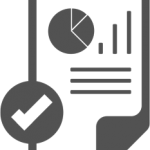The current aim was to evaluate the protective effects of chitosan nanoparticles against cadmium chloride (CdCl2)-induced hepatic and renal toxicity and to elucidate the underlying mechanisms with a focus on the modulation of oxidative stress, inflammation, and apoptosis via the Nrf2/HO-1 and NF-kappa B/iNOS signaling pathways. Four groups were used: group I (control), group II (CS-NPs), group III (CdCl2), and group IV (CdCl2 + CS-NPs). Biochemical, histopathological, and immunohistochemical studies of hepatorenal parameters were performed. Cadmium showed renal dysfunction (increased creatinine and urea), hepatic dysfunction (elevated ALT, AST, and ALP), and disturbed oxidative homeostasis (elevated MDA and decreased antioxidant enzyme activities; SOD, CAT, and GPx in the liver and kidney). The pro-inflammatory cytokines interleukin-6 (IL-6), interleukin-1 beta (IL-1 beta), and tumor necrosis factor-alpha (TNF-alpha) were significantly increased in tissues. In addition, cadmium displayed histopathological alterations in the architecture of the kidney and liver, elevated the expression levels of caspase-3, NF-kappa B, and iNOS, and decreased Nrf2 and HO-1. Interestingly, CS-NPs significantly restored kidney function, liver function, and oxidative homeostasis. CS-NPs also reduced pro-inflammatory mediators (IL-6, TNF-alpha, and IL-1 beta), restored renal and hepatic architecture, decreased the expression levels of caspase-3, NF-kappa B, and iNOS, and increased Nrf2 and HO-1 levels. Therefore, cadmium caused hepatorenal toxicity by causing oxidative stress and affecting NF-kappa B/iNOS and Nrf2/HO-1 pathways. These findings demonstrate that chitosan nanoparticles effectively alleviate cadmium-induced renal and hepatic injury through antioxidant, anti-inflammatory, and anti-apoptotic mechanisms by modulating Nrf2/HO-1 and NF-kappa B/iNOS pathways. Chitosan nanoparticles may represent a promising nanotherapeutic approach against heavy metal-induced organ toxicity.
Research Department
Research Journal
BIOLOGICAL TRACE ELEMENT RESEARCH
Research Member
Research Rank
Q1
Research Website
https://doi.org/10.1007/s12011-025-04749-0
Research Year
2025
Research Abstract
 Do you have any questions?
Do you have any questions? 

